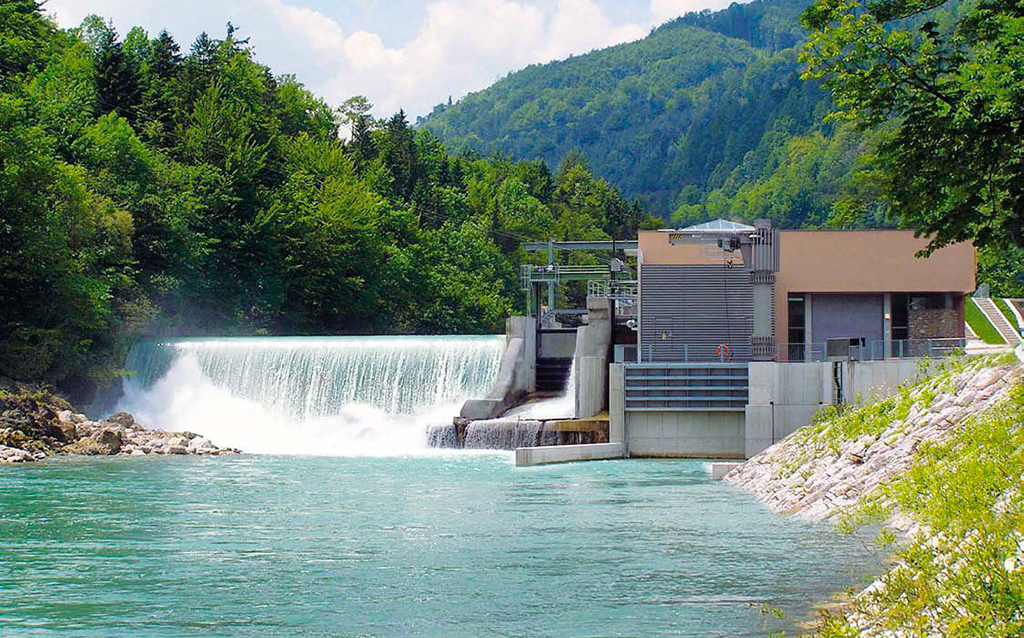- Mechanical energy of water was used to a grinding stone to turn wheat into flour more than 2000 years ago by the Greeks.
- In 1870 first hydroelectric power plant was installed in Cragside, England.
- Hydropower is the largest renewable energy source, and it produces around 16 % of the world’s electricity
- India has a history of about 118 years of hydropower and Small hydro power is now a technically mature technology in the country.
- The first small hydro project of 130 kW was commissioned in the hills of Darjeeling in 1897
Hydropower is a renewable energy source based on the natural water cycle. The main source of hydroelectricity is the water which is readily available in India. Hydropower is the largest renewable energy source, and it produces around 16 % of the world’s electricity and over four-fifths of the world’s renewable electricity. Hydroelectric power defines the usage of water resources towards inflation free green energy in the absence of fuel cost with mature technology characterized by highest prime moving efficiency and spectacular operational flexibility. Water power can be used in various form. The most important way is the hydroelectric dam, where water stored is responsible for the turbine rotation and thereby capture the energy which is used to run the generator.
India has a history of about 118 years of hydropower and Small hydro power is now a technically mature technology in the country. The first small hydro project of 130 kW was commissioned in the hills of Darjeeling in 1897 and the cumulative installed capacity had reached 508 MW till independence in 1947. India has currently installed power generation capacity of 249,488 MW, whereas, as per government's estimate country would need nearly 800,000 MW of installed capacity by 2031–32. Adding such huge electricity generation capacity is a challenge for the country in coming decades, and therefore, India has to harness every available source of power generation to meet its growing electricity demand. The country is endowed with rich hydro power potential and is ranked fifth in the world.
Ministry of New and Renewable Energy has been vested with the responsibility of developing Small Hydro Power (SHP) projects up to 25 MW station capacities. The estimated potential for power generation in the country from such plants is about 20,000 MW. Most of the potential is in Himalayan States as river-based projects and in other States on irrigation canals. The SHP programme is now essentially private investment driven. Projects are normally economically viable and private sector is showing lot of interest in investing in SHP projects. The viability of these projects improves with increase in the project capacity. The Ministry’s aim is that at least 50% of the potential in the country is harnessed in the next 10 years.
Hydro Power Project Classification
Hydro power projects are generally categorized in two segments i.e. small and large hydro. In India, hydro projects up to 25 MW station capacities have been categorized as Small Hydro Power (SHP) projects. While Ministry of Power, Government of India is responsible for large hydro projects, the mandate for the subject small hydro power (up to 25 MW) is given to Ministry of New and Renewable Energy. Small hydro power projects are further classified as
|
Class |
Station Capacity in kW |
|
Micro Hydro |
Up to 100 |
|
Mini Hydro |
101 to 2000 |
|
Small Hydro |
2001 to 25000 |
Challenges in the small hydro power sector in India
- Lack of availability of discharge data
- Lack of involvement of local people
- environmental concerns
- land acquisition problems
- long clearance
- approval procedures
- capability of developers
Hydro Power Technologies
Hydropower has been used by mankind since ancient times. The energy of falling water was used by the Greeks to turn waterwheels that transferred their mechanical energy to a grinding stone to turn wheat into flour more than 2000 years ago. In the 1700s, mechanical hydropower was used extensively for milling and pumping. The modern era of hydropower development began in 1870 when the first hydroelectric power plant was installed in Cragside, England.
In hydro power plant water is stored behind a dam. This reservoir is located very high as height of a reservoir decide the force of water flowing to the turbine. Since the height increase the potential energy of water at the reservoir also increase. Depending on the load demand the water is allowed into the turbine. The water flowing from the control gate have both potential and kinetic energy. The water flow through to the turbine through the penstock which are designed to transport water from intake to turbine without any cavitations problem. The water further increases in the penstock due to the height. The height of water at the water reservoir and amount of water into the penstock determine the total power generation by a hydro plant. Then water then allowed into the turbine generator unit. The water strikes the blade of the turbine and the potential and kinetic energy of water is converted to the rotational energy which drives the blades of the turbine. The shaft of the turbine which is enclosed inside a generator start to rotate due to the rotating blades. This rotating shaft produce alternating current in the coils of the generator. This rotating shaft inside the generation is responsible for the production of magnetic field which is further converted to the electrical energy by electromagnetic field mechanism.
Source: mnre.gov.in, eprmagazine.com, irena.org
Roshni Bhoi, S.M. Ali. Potential of Hydro Power Plant in India and its Impact on Environment. International Journal of Engineering Trends and Technology (IJETT) – Volume 10 Number 3 - Apr 2014
Mishra et al 2015. Small hydro power in India: Current status and future perspectives. doi.org/10.1016/j.rser.2015.05.075 1364-0321
